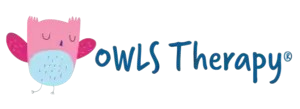One of the most frequent concerns that parents voice when they call me is whether or not their child is showing early signs of autism.
Googling early signs of autism can you lead a person down a scary, often incorrect, path. Everything from vaccines cause autism (they don’t and this has been proven over and over!) to children with autism hate being touched (children with autism can be quite cuddly and love physical touch!). However, there are some signs to look for and discuss with a speech pathologist. While some of these signs may be sign of a language disorder/delay (and not autism) or a hearing loss, it is still a wise choice to speak with a professional.

1.) NO SMILING AT PEOPLE BY 6 MONTHS
A baby smiling at others is one of the first forms of shared communication between the baby and their caregiver. Babies typically begin having social smiles around 2 months of age (before it was probably related to gas!). If by the age of 6 months you are not seeing these social smiles, be sure to bring your concerns up to your pediatrician to make sure there are no eye problems.
2.) NO BABBLING, POINTING, OR MEANINGFUL GESTURES BY 12 MONTHS
A child’s first attempts at communication involve babbling and using their bodies to express themselves. The actual act of speech requires a lot of sequential, fine motor movements with the tongue, lips, and cheeks which babies do not have complete control over. Thus bigger, gross motor movements such as pointing to objects, shaking or nodding their head, or babbling that uses “larger” fine of motor movements such a “mamamamama” and “bababababa” demonstrate a child’s attempts at communication. If your child is communicating mostly through crying, seek the advice of a professional.
3.) POOR EYE CONTACT
While I have gone in depth on the importance of eye contact in a previous blog, it never hurts to go over it again! Eye contact is used to gain attention, understand emotions, helps with articulation development, and is the precursor to developing joint attention. Direct eye contact begins to develop around 6-8 weeks of age and little to no eye contact should be brought to a speech pathologist or pediatrician’s attention.
4.) USING OR FOCUSING IN ON PARTS OF TOYS OR OBJECTS
If your child is focusing on, for example, the spinning wheels of a toy car versus pushing the car and pretending to make it drive, check in with a speech language pathologist. Children typically begin to play with toys in the correct dedicated fashion around the age of 12 months. Any hyper-awareness to certain parts of toys or objects (fan blades, wheels of a wagon) should be voiced to a speech pathologist or pediatrician.
5.) NOT SHOWING ITEMS OR SHARING INTERESTS
When children start to explore and discover the world around them, they typically want to share it with you! They think whatever they just discovered is neat and want to share the excitement with others! When two people focus on the same item, this is called joint attention and is a key component of meaningful communication. When a child shares an item or activity with another, this is the first signal of a child developing joint attention skills.

6.) NOT RESPONDING TO SOUNDS, VOICES, OR NAME
While hearing loss would need to be ruled out; responding to speech, especially, their name, is a critical building block for functional communication. Children typically start to consistently respond to their name around the age of 7-9 months.
7.) LOSS OF SKILL AT ANY TIME
Loss of skill can involve motor, language, or feeding skills. You might notice a child using new vocabulary on a beach vacation (ex. sand) and then not using it when you get home. This is normal because the context to use the word has diminished. However, losing words that are found daily in the child’s environment (ex. dog, ball, cracker) should be addressed with a professional. This also goes for a child refusing to eat previous favorite foods. While the child may be tired of eating the same food, utter refusal to eat a well-liked food would warrant a feeding evaluation.
8.) NO ONE WORD COMMUNICATIONS BY 16 MONTHS
Children are expected to have at least one word by the age of 12 months with the average child having 5. By the age of 16 months, 10 words are expected with the average child having 50. Thus, any delay in language should be addressed with a speech pathologist to prevent the language gap from further widening.
9.) NO TWO-WORD UTTERANCES BY 24 MONTHS
As mentioned above, typical language acquisition is fast! By the age of 24 months, children are expected to have at least 50 words but the average 24 month old has 300 words that they are combining into novel 2-word utterances (ex. “thank you” does not count but “Mommy sock” does). As mentioned in previous blogs (here and here), taking a wait and see approach could mean you are missing out on precious time where you could be helping your child’s language development.
About the Author
JANENE BESCH
Director/Speech-Language Pathologist
Janene Besch, née Martin, holds a Master’s degree in Speech Language and Hearing Sciences from San Diego State University and a Bachelor’s degree in Psychology from the University of California at San Diego. Janene is a member of the American Academy of Private Practice in Speech Pathology
Read more >
More Stories




s speech-language pathologists, we’re frequently asked about pacifiers and their impact on speech development. The internet can be a helpful, but overwhelming, place full of information when making choices about your child’s care. Here at OWLS Therapy, we aim to provide education and ways to support both you and your child so you can achieve success.
Read More →